Anatomy of a scam: Protecting our clients from fraudulent valuations
by charlene_voisin | April 1, 2012 9:00 am
By Mark T. Cartwright
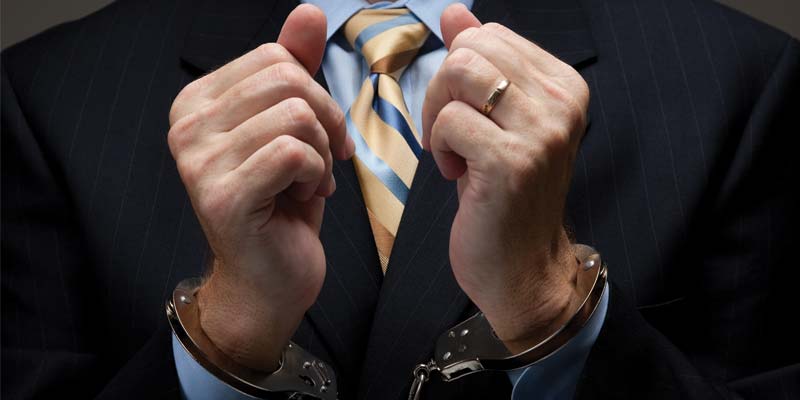
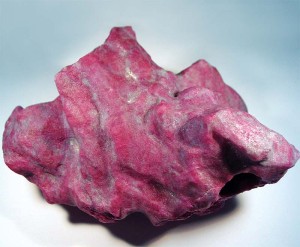
Centuries of protecting trade secrets and encouraging old wives’ tales have successfully shielded the jewellery trade from the prying eyes of consumers and crafted an air of mystery that continues today. Unfortunately, this same veil of secrecy has created an opening for the morally and legally challenged to operate on the fringes of our industry.
Whether it involves thousands of relatively small transactions or individual multi-million dollar scams, the fraud invariably consists of inflated or otherwise misleading ‘appraisals.’ As ethical, professionally trained appraisers, we have the ability and duty to combat these practices to protect our clients and our industry. Our approach to this type of assignment requires we have a solid foundation in appraisal principles and technique, as well as the ability to remain dispassionate and objective in the face of a potentially emotionally charged situation.
How do otherwise intelligent people let themselves get duped? The combination of consumers’ ignorance and greed is what every scam artist relies on when seeking victims. When combined with deception, the trap is nearly inescapable for some people. I’m reminded of the famous quote by P. T. Barnum, “There’s a sucker born every minute,” and the equally apt quote by W. C. Fields, “Never give a sucker an even break.” Fortunately, some would-be victims are conscientious enough to seek outside expertise—us.
I hope to illustrate some of the ways we can help our clients see the light by sharing one of my client’s experiences and my role in the process.
Big fish
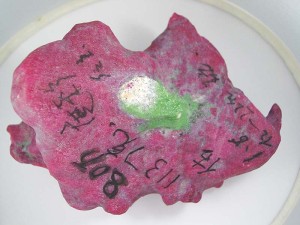
Perhaps the largest scheme I’ve had the pleasure of stopping involved an international group of investors who had been approached by a ‘development company’ for a loan in excess of $100 million US. As collateral for the loan, the borrowers offered an uncut, natural ruby weighing several kilograms. An attorney for the investors approached me for an independent appraisal of the stone prior to entering into the loan agreement. The borrowers had already provided them with an appraisal from a laboratory in Hong Kong that was beautifully bound in leather and which documented the stone and the rationale for the valuation in great detail. Their appraised value for the stone was in excess of $400 million US, nearly triple the amount of the requested loan. I was asked to verify the other laboratory’s documents in addition to providing my own opinion of the stone’s value and authenticity.
To accomplish that goal, a representative of the stone’s owner flew with it to my lab for the examination. As an independent appraiser, my only duty and obligation is to the truth. All parties that might rely on my report must be treated equally and fairly, regardless of my personal feelings about their integrity or motives. To that end, I made no comments and expressed no outward emotion when I accepted the $400-million ruby from the would-be borrower. The irregular mass was translucent, heavily fractured and twinned, and with uneven colour distribution. In addition, it had been core-drilled. I was also provided with a copy of the Chinese appraisal, along with an English translation of the document.
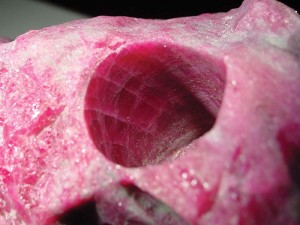
My examination of the stone verified it was the same stone described in the borrowers’ appraisal and laboratory report, and I was able to complete my physical evaluation of the property within a matter of hours. The next step was to have a college professor (and native of China) at the local university verify the English translation of the Chinese document was sufficiently accurate for me to rely upon. Once that was established, I could refer back to it as I performed my analysis.
After extensive research and interviews with several experts, I reached a value opinion with which I was very comfortable and one I felt was legally and logically defensible. Amazingly, in my research I had located numerous examples of the same type of raw material in very similar sizes. This let me know that such specimens weren’t remarkably rare or unusual. The other stones I found for sale were offered for pennies to a few dollars per gram at most. The resulting calculations put this piece’s market value well under $5000 US. It was clear the other laboratory and I were both looking at the same stone, but reporting completely different results. My client would want to know how that was possible and would need some way to decide which valuation was correct. Answering those questions required that I perform an ‘appraisal review’ of the other document in which I attempted to determine the differences in methodology and reasoning that led to such an extreme discrepancy in value conclusions. My report needed to not merely present my own findings in a clear and credible manner, but to provide a factual basis for my client to decide for himself which report was worthy of belief.

A common ploy used to overvalue uncut stones is to base the appraisal on legitimate values for finished stones mounted in jewellery and offered in the retail market. In other words, scammers inflate the perceived worth of their products by intentionally choosing incorrect market data on which to base the value. Another tactic is to combine that technique with an exaggerated estimate of the yield from the rough and the expected quality of the hypothetical finished stones; in other words, misstating the verifiable facts of their product.
The lab in Hong Kong had used both techniques and pushed their conclusions to the extreme. For instance, since this stone had never been subjected to any treatments, they cited recent record-high auction prices for the finest, untreated faceted Burmese rubies over five carats. They deduced a price-per-carat from those sales and multiplied these extreme prices by the weight of the uncut, poor-quality African stone to arrive at an absurd value. While it was true the rough stone was untreated, it was not of gem-quality, not Burmese in origin, not faceted, not set into a historically significant piece of jewellery with impeccable provenance, and was not being offered at auction. In short, their chosen ‘comparable sales data,’ while factually accurate, bore no relationship to the reality of the subject property.
However, this was apparently not a sufficiently high value because they then quoted various authors from the 18th and 19th centuries who had stated that “the finest rubies are worth many times the value of diamond.” From those obscure historical sources, my creative colleagues invented a multiplier based on the speculative value of the largest diamond known—the Cullinan I—to somehow arrive at the $400-million value. The data sources and their valuation logic were well documented and clearly laid out in the 20-page report. It might even have been convincing evidence for someone unfamiliar with gemstones or appraising. Luckily, in an odd bit of self-promotion, the other laboratory had also provided additional information that would eliminate any trace of doubt about their motives.
The foundation

If we belong to a professional appraisal association, we’ve been probably exposed to at least the basics of proper appraisal methodology. Unfortunately, providing a credible report that will withstand extreme scrutiny requires more than just a basic understanding. A firm grounding in the requirements of the Uniform Standards of Professional Appraisal Practice (USPAP) and their correct application is a necessity. Even though USPAP originated in the United States, it is widely cited as authoritative in Canada and internationally. If you don’t have access to the current version of USPAP, it can be ordered in hard copy or digital format online. Fifteen-hour classes on the basics of USPAP are available and are highly recommended.
In my appraisal of the ruby ‘doorstop,’ I cited the specific definitions and requirements of USPAP I had followed, as well as all of the deviations from accepted appraisal practice I had found in the other report. However, even though I had documented numerous fatal flaws in the Chinese appraiser’s methodology and reasoning, along with carefully detailing my own approach and supporting market data, the final straw that absolutely discredited the Chinese appraisal was the decision to include a pricing structure as an appendix to the document. In it, they explained their fee was determined exclusively by the value the client requested. Specifically, the price list stated that if the client wanted their lab to provide a report with an appraised value of more than $1 million, their fee was one per cent of the value requested, although payment could be differed for 90 days to allow time for the client to sell the item. Once again, my Chinese colleagues took an unethical appraisal practice and carried it to an extreme.
Protecting the client’s investment
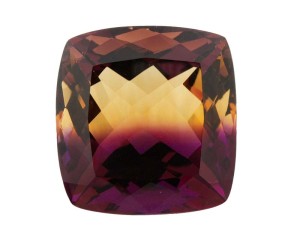
Few jewellery scams are of the magnitude of this particular case. A quick survey of jewellery offered for sale on eBay can be an eye-opening experience that shows how widespread misrepresentation has become. The buyer is the victim, whether it involves inflating grades or outright lies about the product’s identity, value, or quality. Our clients rely on us to protect them from fraudulent jewellery ‘investments.’ The best way to accomplish this is by clearly presenting the facts and our opinions in a manner that upholds recognized professional appraisal standards. We can use those same standards to discredit the seller’s valuation in an objective, dispassionate way. Failure to do so costs us credibility and could potentially damage our client’s legal defence or ability to recoup their money from a seller whose swindle has been exposed.
 Mark T. Cartwright, ISA CAPP, ICGA, CSM-NAJA, GG (GIA) is president of The Gem Lab, I.C.G.A., an independent American Gem Society (AGS)-accredited gem laboratory. He has been a jewellery designer, goldsmith, gemmologist, and appraiser for more than a quarter century. Cartwright can be contacted via e-mail at gemlab@cox-internet.com[1].
Mark T. Cartwright, ISA CAPP, ICGA, CSM-NAJA, GG (GIA) is president of The Gem Lab, I.C.G.A., an independent American Gem Society (AGS)-accredited gem laboratory. He has been a jewellery designer, goldsmith, gemmologist, and appraiser for more than a quarter century. Cartwright can be contacted via e-mail at gemlab@cox-internet.com[1].
- gemlab@cox-internet.com: mailto:gemlab@cox-internet.com
Source URL: https://www.jewellerybusiness.com/features/anatomy-of-a-scam-protecting-our-clients-from-fraudulent-valuations/